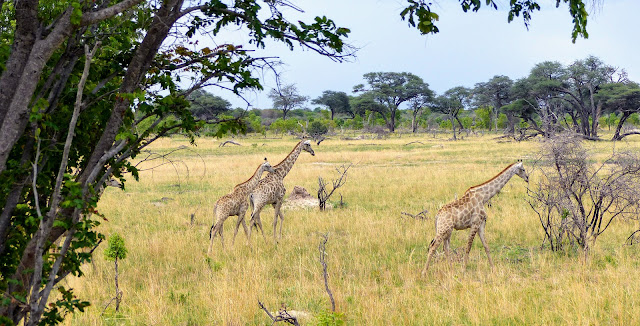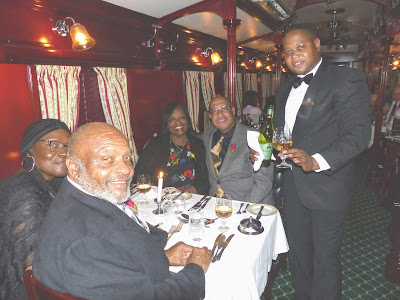It seems that at the beginning of every year I express optimism about a long-awaited revival of the mining industry. However, despite a promising start, base metal prices are now roughly the same as 12 months ago, although precious metals have faired a little better (see
InfoMine).
It has been a good year for MEI, however, with record turn-outs at two of our well established conferences.
There was also a very healthy turn-out, of over 6600 delegates, in Denver in February for the
Annual SME Meeting. Numbers were in no small way boosted by the associated symposium to celebrate the 90th birthday of
Prof. Douglas Fuerstenau.
Unfortunately Prof. Fuerstenau was unable to attend last year's International Mineral Processing Congress in Moscow, where it was announced that he was the recipient of the IMPC's Distinguished Service Award (DSA). He thus became the first person in the history of the IMPC Congresses, which go back to London in 1952, to be awarded both the Lifetime Achievement Award as well as the DSA. The presentation of the DSA was made at the Denver meeting by the IMPC Chairman, Prof Cyril O'Connor and I was honoured to be invited to join Cyril and Doug for a photo of the only two living recipients of this Award.
 |
| Prof Fuerstenau and me, with IMPC President-Elect Ralph Holmes, and Cyril O'Connor |
Following the SME, Barbara and I took a break hiking in one of the loveliest areas on earth, the
Jungfrau Region of Switzerland, which I would highly recommend to any
MEI Conference delegate planning to visit Europe after a Falmouth conference.
There was also an excellent turn-out in April, of around 900 mining industry people, for the 26th International Mining Congress and Exhibition of Turkey (
IMCET 2019), which was held about 40km from Antalya. MEI was pleased to be invited, as a media partner, to this, the 50th anniversary of the congress. Around 50 companies exhibited in the very clean and bright exhibition area, and it was good to see a number of familiar faces from around the world.
 |
| Barbara and me, with Guvan Onal and Diana Drinkwater |
 |
| Pre-drinks at the spectacular gala dinner |
In May, while Barbara and I were island hopping on the beautiful
Dalmatian coast in Croatia, Amanda was hard at work in Perth, Australia for the annual
ALTA conference. ALTA, like MEI, is a family run business, and it was good to see how well Amanda got on with Alan Taylor and his family.
 |
| Joan and Alan Taylor presenting Amanda with a gift |
 |
| Amanda with Allison and Rebecca Taylor |
We were a little nervous in June as we had a brand new venue for
MEI Conferences. We needn't have been, as the
National Maritime Museum proved to be a superb venue, and we had a record turnout for
Physical Separation '19, the sixth in this popular series. This was preceded by
Computational Modelling '19, the 7th in the series, but sadly the last. We feel that this conference has now run its course, and that computational modelling techniques are now so well established that they play a part in all major conference programmes.
We had outgrown our previous venue, the St. Michael's Hotel, and the National Maritime Museum, apart from having a fine auditorium, gave us enough space for a small exhibition.
It was a great week, marred only by the unusually wet weather, and very damp groups of delegates arrived for welcome ale at the Chain Locker pub after the first day walks on the coastal path.
 |
| A brief stop at the Fal estuary with Physical Separation '19 delegates before the rain arrived |
 |
| Computational Modelling '19 delegates drying off in the Chain Locker |
Thankfully, the weather improved a little towards the end of the week, just in time for the Physical Separation '19 tour of the 19th century ruins of the Wheal Peevor tin mine.
There was
good news for Minerals Engineering in July, consolidating its number 1 position with an impact factor of 3.315, well ahead of other journals in this field. I would like to thank not only the Editorial team, but also the many hundreds of researchers worldwide who give up some of their valuable time to contribute to the peer-review process via diligent review of the submitted papers.
It was good to be back in Leeds in September, particularly to attend a conference at my
alma mater, Leeds University, which I left 50 years ago prior to departing for Zambia. MEI was a media partner for the
16th European Symposium on Comminution and Classification and it was good to see so many familiar faces from around the world.
 |
With organising committee chairman Mojtaba Ghadiri and familiar faces from Australia
Paul Cleary of CSIRO, Grant Ballantyne of Ausenco and Malcolm Powell of JKMRC |
Amanda was back in Australia in September for two major conferences in Perth,
MetPlant 2019 and
World Gold 2019. Also a good opportunity to catch up with old friends and make some new ones.
In early October I "celebrated" 50 years in the minerals industry. In that half century I have seen enormous changes in mineral processing, both in plant practice and research, so it was perhaps an appropriate time to present a guest lecture at the
Helmholtz Institute Freiberg for Resource Technology, Germany on
The Evolution of Mineral Processing.
Under the leadership of the two co-directors,
Prof. Jens Gutzmer and MEI's
Sustainable Minerals '20 consultant,
Prof. Markus Reuter, the HIF has rapidly developed into one of the world's premier mineral processing research institutes, equipped with state of the art equipment. It also has an impressive team of researchers, led by
Minerals Engineering assistant editor
Dr. Martin Rudolph, who hosted me at the Institute as well as taking me on a visit to
Altenberg, the most famous tin mine in the region, now a mining museum.
 |
Dinner in Freiberg with (L-R) Edgar Schach (Germany), Bruno Michaux (Belgium), Martin Rudolph,
Anna Vanderbruggen (France), Nathalie Kupka (France), Ahmad Hassanzadeh (Iran) and Duong Hoang (Vietnam) |
 |
| In the Altenberg tin mine |
There was another anniversary in October, back in Cornwall, but a more sombre one, the 100th anniversary of
Cornwall's worst mining disaster, at the Levant tin mine near Land's End, one of Cornwall's
submarine mines, where the lodes extended out beneath the ocean floor. A man engine was installed at Levant in 1857 but in 1919 it suffered a disastrous failure when a link between the rod and the engine snapped, killing 31 men, injuring many others and devastating the St. Just district mining community. On October 20th hundreds of people, including relatives of those killed, attended a very moving service in the ruins of the mine 'dry' from where the miners accessed the tunnel which led to the man-engine, and their 30 minute journey to a depth of 1600 ft.
 |
| Some of the relatives of the miners who perished, at the centenary service |
 |
Representing the Cornish Mining Sundowners at the man-engine shaft:
Barry Wills, Linda Shimmield, Barbara Wills, Sam Wood and Carol Richards |
The following month we were in Cape Town for our biggest conference ever,
Flotation '19, with 293 delegates from 33 countries.
On the first day I had the pleasure of presenting the
2018 MEI Young Person's Award to
Dr. Zhiyong Gao, of the Central South University, China. Two of his nominators, Profs.
Cyril O'Connor and
John Ralston, were at the conference, and Prof. Ralston presented the first keynote lecture.
 |
| Zhiyong with Cyril O'Connor, me and John Ralston |
It was a great week at the Vineyard, which began on the Sunday prior to the conference, where, at a
Glencore workshop,
Prof. Graeme Jameson cut a special "Jameson Cell cake" to mark the 30th anniversary of the cell, which now has over 350 installations around the world.
Another highlight of the week was the
conference dinner, held at the beautiful Kirstenbosch Botanical Gardens, a short drive from the conference venue.
 |
| The Big Hole, Kimberley |
 |
| Black rhino at Victoria Falls |
And then back to a very wet, windy and cold Cornwall! It has certainly been an interesting year and, on behalf of all of us at MEI, I would like to thank all of you who were a part of it. We hope to catch up with as many of you as possible in 2020. Happy New Year!








































































-EDIT.jpg)




